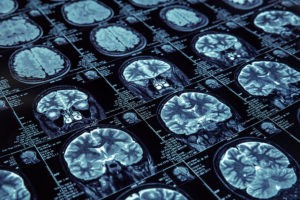

View Topics

The nervous system – is a complicated system of structures, which permeates the whole body by ensuring regulation of its vital functions due to the ability to respond to external and internal factors. Roughly speaking, the nervous system is the center of the body, and if it is damaged, all organs and processes are affected,…

The peripheral nervous system is a part of the nervous system that includes the cranial and spinal peripheral nerves, providing the connection of the central nerves with the organs and systems of the body. Among the most frequently diagnosed diseases of the peripheral nervous system of a person, several forms of neuritis, plaxitis, neuralgia are…

Many people think that Alzheimer’s disease is the only condition that can lead to dementia. However, several diseases can cause permanent memory loss. Thus, making a diagnosis a significant issue. All of us forget things from time to time. Recall how long you searched for keys or forgot a person’s name, even though they just…

Paresthesia is a type of sensitivity disorder that includes subjective tingling and burning sensations. All these unpleasant sensations bothered every person more than once; they could appear during prolonged sitting in an uncomfortable position, squeezing of arms or legs, in case of strong fear. However, this condition quickly passes and does not constitute any particular…

Neuritis is a medical term meaning inflammation in the peripheral nerves (nerves outside the central nervous system are called peripheral). Symptoms of neuritis will vary depending on which nerves are affected but typically include weakness, numbness, pain, tingling sensations, loss of reflexes, muscle atrophy, or sensory disturbances (e.g., vision, balance, hearing). These symptoms can be…

This ailment is often called CTS. The problem is a typical and often debilitating disease. It affects millions of people around the world. It primarily affects the hands and wrists. It causes several disturbing markers that prevent a person from performing everyday tasks. Compression of the median nerve is associated with this сondition. It pinches…

The Most Common Types of Neurological Disorder According to research by the University of California’s Irvine Institute for Memory Impairments and Neurological Disorders, there are more than 600 neurological disorders. The World Health Organization estimates that hundreds of millions people are affected by different neurological disorders around the world. A few different examples of types of neurological disorders are:…

A neurologist is a physician who practices in diagnosing, managing, and treating disorders associated with the nervous system and the brain. A neurologist deals with conditions that affect the central nervous system, which is the spinal cord and the brain, as well as those that affect the peripheral nervous system or sensory receptors. Some of the neurological…